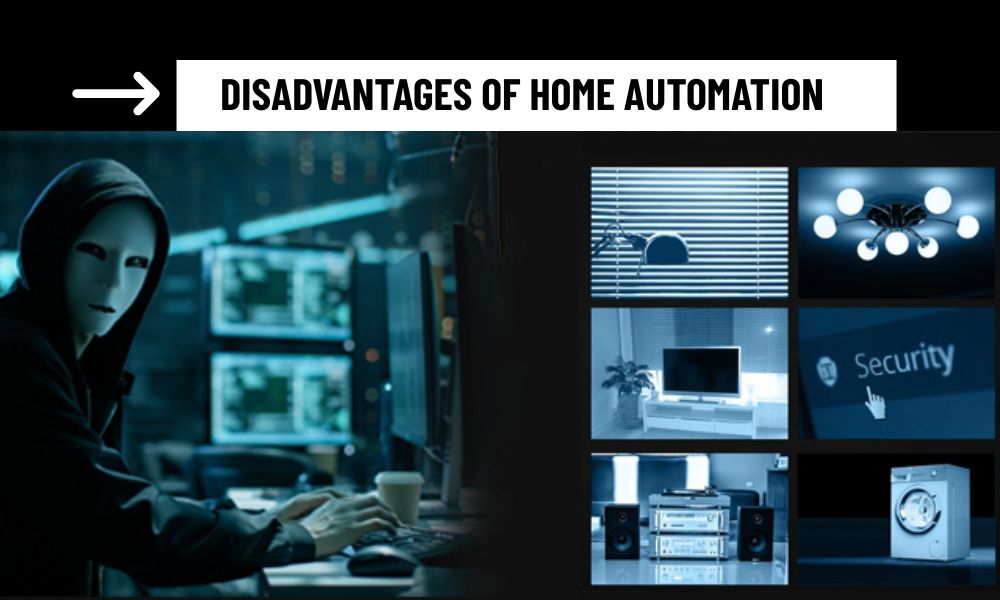The idea of a fully automated home—where lights respond to your voice, thermostats adjust to your habits, and doors lock themselves—is undeniably appealing. As the smart home revolution accelerates, more homeowners are adopting connected devices in pursuit of convenience, energy savings, and security.
But beneath the surface of this seamless lifestyle lies a set of challenges that are often overlooked in marketing materials and tech reviews. Understanding the disadvantages of home automation is crucial for anyone considering a long-term investment in smart technology.
Disadvantages of Home Automation
Convenience vs. Control
One of the greatest selling points of home automation is convenience. However, this very convenience can sometimes come at the cost of manual control and autonomy.
When systems are deeply automated, human intervention can become more difficult. For instance, adjusting your lighting manually might require navigating a mobile app or voice assistant—slower than simply flipping a switch. Over time, users may find themselves locked into automated behaviors that aren’t always intuitive or efficient in the moment.
In this sense, one of the key disadvantages of home automation is that control may become abstracted, and sometimes, less accessible.

The Cost of Smart Living
Another often underreported drawback is cost—not just the initial price of devices, but also the ongoing financial commitment. Many smart home platforms rely on subscription services for full functionality, such as cloud storage for cameras, AI-based automation, or advanced scheduling features.
Beyond devices and subscriptions, homeowners might also need to:
- Upgrade routers or install mesh Wi-Fi networks
- Hire electricians or IT professionals for integration
- Replace devices due to rapid tech obsolescence
Over time, these costs can add up significantly, especially when systems require continuous updates or premium service tiers.
Privacy Erosion in the Name of Intelligence
Home automation thrives on data. Every smart device—whether a light, speaker, or sensor—collects information about your routines, preferences, and even your conversations. This data is often stored on cloud servers and used to personalize services.
While this creates a smoother user experience, it also raises critical privacy and ethical concerns. Who owns your household data? How is it protected? Could it be shared with third parties or compromised in a breach?
These are not theoretical issues. Real-world cases have shown how vulnerabilities in smart doorbells, voice assistants, and baby monitors can lead to unauthorized access. Thus, a key disadvantage of home automation is the growing reliance on external platforms that require trust but don’t always guarantee transparency.
Technology Fatigue and System Complexity
As homes become smarter, they also become more technologically dependent. Managing a growing ecosystem of apps, hubs, settings, and updates can lead to what some users describe as “automation fatigue.”
For instance, setting up routines across different platforms—say, integrating a third-party air purifier with a voice assistant and a humidity sensor—might involve multiple steps, delayed triggers, or compatibility issues.
Even worse, simple failures like a Wi-Fi outage or a missed firmware update can bring entire systems offline, leaving users frustrated. This increased complexity not only demands time but also continuous learning—something not all homeowners are prepared for.
Vendor Lock-In and Reduced Flexibility
One subtle but impactful disadvantage of home automation is vendor lock-in. Once you invest in a particular platform (Google, Apple, Amazon, etc.), switching to another becomes complicated, if not cost-prohibitive.
Your smart lights might only support one ecosystem, while your security cameras need another. The lack of seamless interoperability means homeowners are often forced to commit to a specific ecosystem and stay within it—even when better devices or features exist elsewhere.
Despite industry efforts to create universal standards like Matter, full cross-platform freedom remains a work in progress.
The Reliability Paradox
Ironically, the smarter a home becomes, the more fragile it can be. Traditional systems (like mechanical locks or switches) work independently of software and networks. But in an automated home, a failed app update or misconfigured routine can prevent basic tasks—like unlocking the front door or turning on the lights.
This creates a paradox: by introducing “intelligence,” homes can become less resilient unless carefully managed.
For people who value fail-proof simplicity, this trade-off is one of the most compelling disadvantages of home automation.

A Smarter Home Needs Smarter Planning
Home automation offers real benefits—efficiency, security, customization—but it’s not a silver bullet. The technology brings along an ecosystem of dependencies, risks, and hidden costs that are rarely discussed in promotional content.
By understanding the disadvantages of home automation, you can approach smart living with realistic expectations and make more strategic decisions. Whether it’s choosing devices that work offline, diversifying your tech stack, or prioritizing privacy-friendly options, being informed is the first step toward building a smart home that truly works for you.
Remember: smart living should simplify your life, not overcomplicate it.
